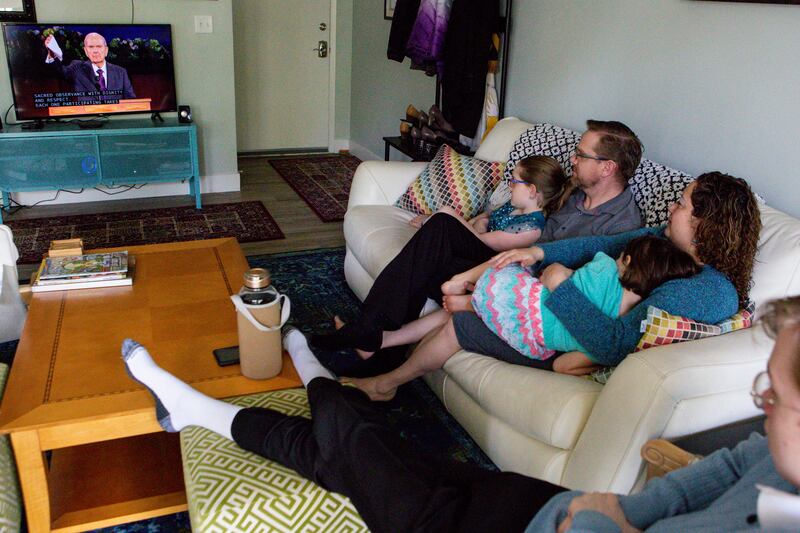For the second consecutive gathering, the general conference of The Church of Jesus Christ of Latter-day Saints is being delivered exclusively through broadcast technology. The 21,000-seat Conference Center continues to sit silent. The Salt Lake Temple and grounds surrounding Temple Square are undergoing a multiyear retrofit and renovation. Yet, the historic 190th semiannual conference is being sent to the faith’s 16 million members around the world.
President Russell M. Nelson continues to follow a passage of the faith’s canonized scripture, Doctrine and Covenants 84:62: “Therefore, go ye into all the world; and unto whatsoever place ye cannot go ye shall send, that the testimony may go from you into all the world.”
Since the outbreak of the coronavirus, technology has been creatively deployed to send critical messages and bring people together in meaningful ways. This isn’t new. The Church of Jesus Christ has been sending where they could not go from the beginning.
In a recent interview, Elder M. Russell Ballard, acting president of the Quorum of the Twelve Apostles for the church, sat down and discussed how the church has sent its people and message to the world over the decades. In the beginning years of the church, the word was sent on horseback and then by buggy. “Then things start to move along,” he said. “Henry Ford decides he can figure out how to make an engine and put some wheels on it. And they call it a car … And now we’ve become international.”
There is an interesting parallel between technological advances and the growth of the Church of Jesus Christ. Early church Apostle Orson Pratt spoke to a group in 1873, a full three years before Alexander Graham Bell filed his patent on the telephone, and remarked that, although in 1873 any man-made sound couldn’t extend or be heard more than moderate distance away, the future would allow the church to send its message so that it “will be heard by all people, nations, kindreds and tongues in the four quarters of our globe.” Pratt continued, “I do not know that the sound will be so much louder than some we have heard, but it will be carried by some miraculous power so that all people will hear it.”
President Ballard applied the advancements to the challenges of 2020: “Now we’re in a pandemic, and we can’t move about. So what do we do? We go up, (in the administration building) and we sit down, and we’re in the room in Cusco, Peru … and I hold a priesthood leadership training meeting, we meet with the sisters, we meet with the missionaries, and we don’t leave the building.”
President Ballard concluded, “The Lord’s been pretty good to us to help us keep our arms around his kingdom by giving us technology almost in parallel for the needs and the growth of the church.”
Sermons and messages sent by means of technology, instead of in person, still include the invitation to come together in good will, faith, fasting and prayer.
For the past two years the faith has pointed its members toward a more home-centered, church-supported approach to following Jesus Christ. This general conference will also be a home-centered global gathering.
An interesting byproduct of unity through the application of sending is that the entire membership of The Church of Jesus Christ of Latter-day Saints will experience this weekend’s general conference in precisely the same way.
Global challenges are likely to continue while technology continues to evolve and progress. The Church of Jesus Christ of Latter-day Saints, headquartered in Salt Lake City, will continue to send where it cannot go.

